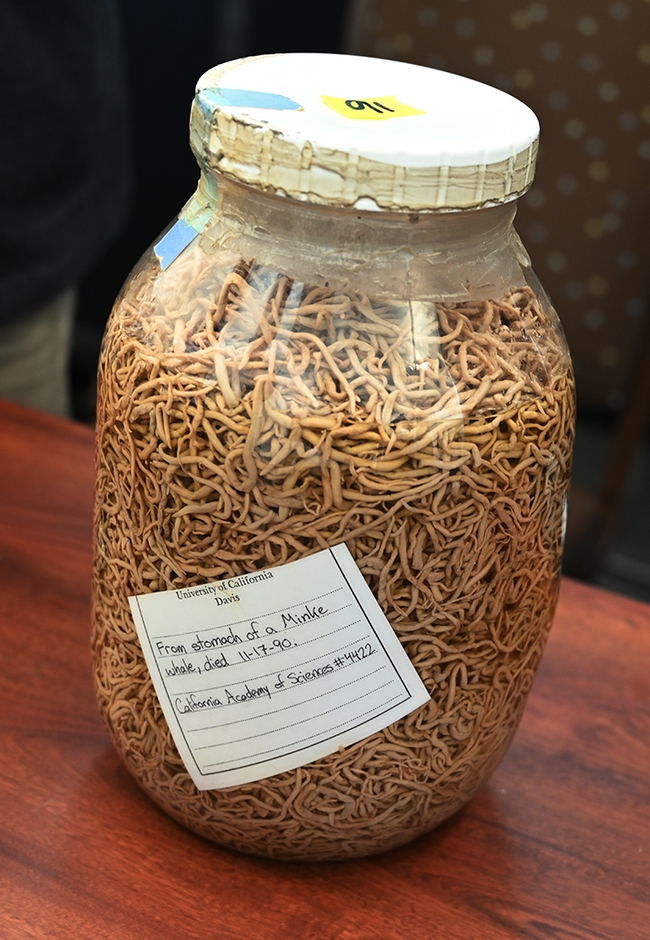The nematode collection featured mostly root-knot nematodes and Ascaris (roundworm) nematodes. The display included:
- What's in the jar?
- Celery infected with root-knot nematodes
- Tree swallow infected with Diplotriaena
- White-tailed deer eye infected with a Thelazia species
- Peach root infected with root-knot nematodes
- Mormon crickets infected with Gordius robustus
- Lettuce infected with root-knot nematodes
- Garlic damaged by Ditylenchus dipsaci
- Horse stomach infected with three parasites: Parascaris (roundworms), tapeworms, and botfly larvae.
- Grape roots infected with root-knot nematodes
- Sweet potato infected with root-knot nematodes
- Sugar beet infected with cyst nematodes
- Peach root infected with cyst nematodes
- Sugar beet infected with root-knot nematodes
- Ascaris lumbricoides (roundworm)
- Minke whale infected infected with ascaridoid nematodes
- Heartworm of dog
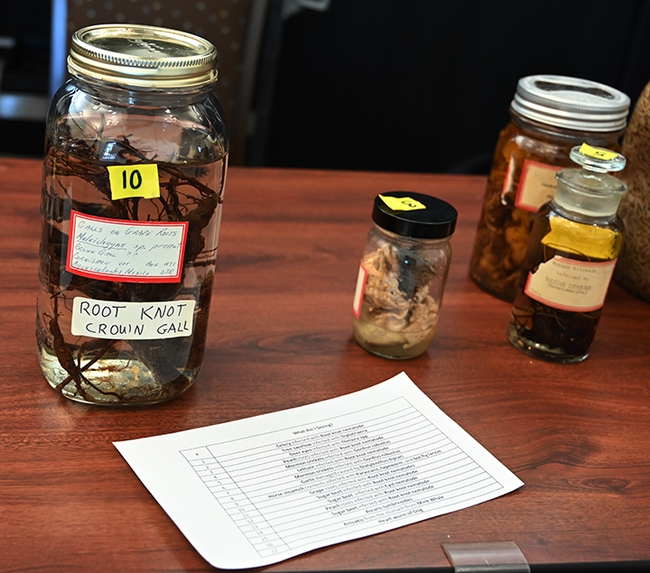
"Plant-parasitic nematodes are destructive pests causing losses of billions of dollars annually," Siddique says on his website. "Economic, health, and environmental considerations make natural host plant resistance a preferred strategy for nematode control, but there are limitations to this approach. In many cases, the resistance conferred by resistance genes is partial, and some of the nematodes are able to survive. Similarly, nematode resistance genes are often effective against only one or a few species, whereas plants are exposed to several pathogens in the field. Another concern is the emergence of pathotypes that can overcome resistance. In view of all these limitations, it is important to identify additional mechanisms and tools that can be used to develop novel and sustainable approaches to the management of nematodes."
Research in the Siddique lab focuses on basic as well as applied aspects of interaction between parasitic nematodes and their host plants, he says. "The long-term object of our research is not only to enhance our understanding of molecular aspects of plant–nematode interaction but also to use this knowledge to provide new resources for reducing the impact of nematodes on crop plants in California."
Nematologist Steve Nadler, professor and chair of the UC Davis Department of Entomology and Nematology, explains what a nematode is on this YouTube video that he presented at last year's UC Davis Biodiversity Museum Day. Due to COVID-19 precautions, the 2021 event was virtual, instead of in-person.
Visitors to the 2022 UC Davis Biodiversity Museum Day adhered to the Campus Ready guidelines, with masks required. Eleven museums or collections participated:
- Arboretum and Public Garden
- UC Davis Bee Haven
- Bohart Museum of Entomology
- Botanical Conservatory
- California Raptor Center
- Center for Plant Diversity
- Department of Anthropology Museum
- Museum of Wildlife and Fish Biology
- Nematode Collection
- Paleontology Collection
- Phaff Yeast Culture Collection
In addition, visitors could register for side trips to the Arboretum and Public Garden, Bee Haven and Phaff Yeast Culture Collection. The Botanical Conservatory opened its doors to visitors throughout the day.
Traditionally, the UC Davis Biodiversity Museum Day takes place the Saturday of Presidents' Weekend, and at the individual locations, noted organizer Tabatha Yang, education and outreach coordinator. This year it occurred at one site, exposition-style.
The campus is now gearing up for the 108th annual UC Davis Picnic Day, set April 23 and themed "Rediscovering Tomorrow." The free public event is the first, in-person Picnic Day in two years.
Attached Images:
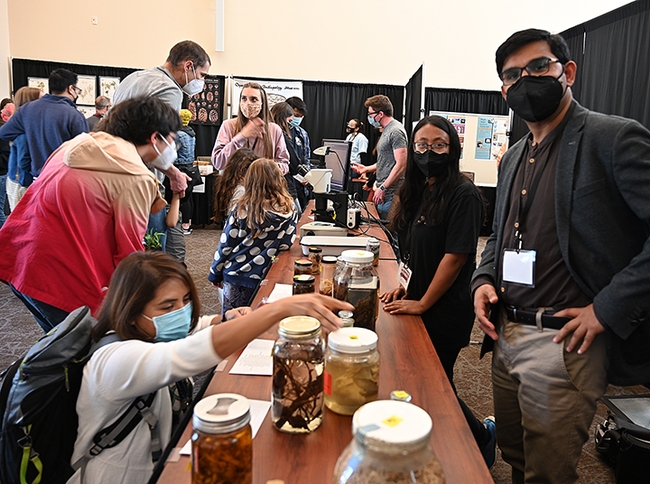
Three nematologists kept busy at their booth at the UC Davis Biodiversity Museum Day. In front is coordinator Shahid Siddique, assistant professor, and his doctoral students Pallavi Shakya (nearest him) and Alison Coomer. In the back (far right) is Rob Blundell, not part of the lab, but who assisted. (Photo by Kathy Keatley Garvey)
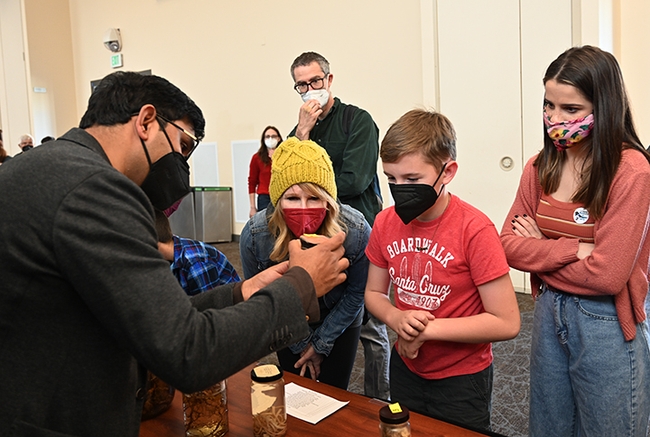
Nematologist Shahid Siddique, assistant professor, UC Davis Department of Entomology and Nematology, shows nematodes to curious visitors. (Photo by Kathy Keatley Garvey)
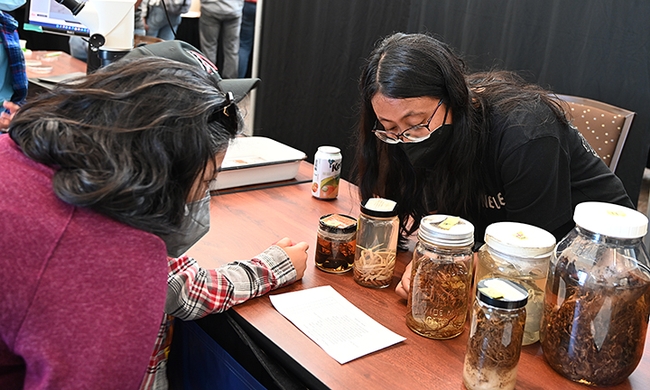
UC Davis doctoral student and nematologist Pallavi Shakya answers questions about nematodes. (Photo by Kathy Keatley Garvey)
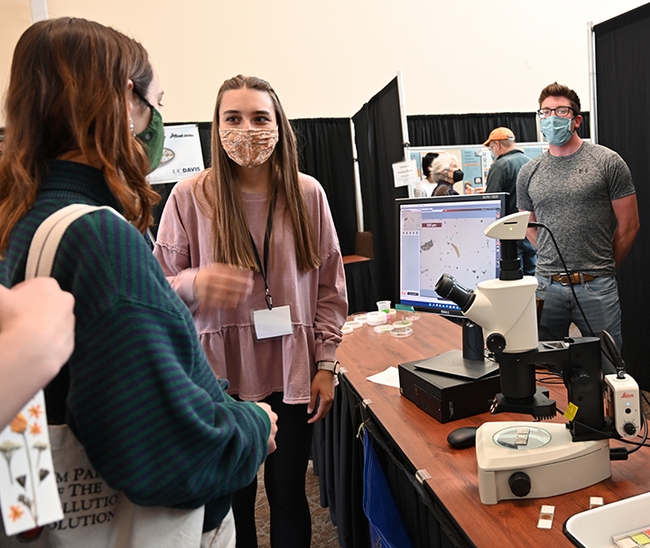
Doctoral student and nematologist Alison Coomer fields questions from the crowd. At far right is scientist Rob Blundell, who assisted. (Photo by Kathy Keatley Garvey)
